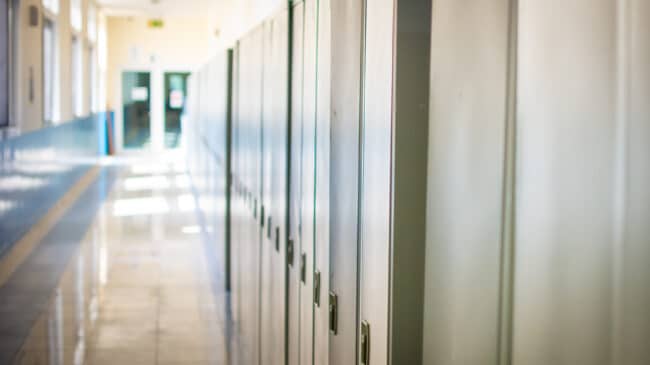For the private sector, inflation and the rising cost of living are swallowing up the wage growth that some workers experienced during the COVID-19 pandemic. Many businesses have been bracing for reduced demand and a recession. For the public sector and public schools, in particular, the implications of inflation aren’t as clear cut but they are just as problematic.
As Governing’s Girard Miller pointed out, most state and local government revenue sources are inflation elastic, meaning that they automatically respond to inflation. Because income and sales taxes are usually anchored to percentage rates, increases in taxpayers’ wages and in prices lead to commensurate increases in tax revenues for states and local governments.
However, high inflation poses several challenges for public schools, particularly when it comes to property taxes that many school systems depend on and with labor negotiations.
While the percentage of overall education revenue coming from property taxes varies from state to state, public schools nationwide tend to get between 30% and 50% of their total revenues from local property taxes. Although property taxes can also adjust to inflation—particularly when there’s a booming housing market—most states have limitations in place to restrict how much property tax collections can grow from year to year.
While these kinds of protections are wise and understandably welcomed by taxpayers, especially retirees, school districts might argue the caps may prevent school budgets from keeping up during periods of especially high inflation.
The states whose K-12 schools may be most impacted by rising inflation are those with strict limits on property tax growth. For example, Michigan and Arizona both limit the annual growth of property valuations to 5% and 2%, respectively. These states can use general state funds to partially compensate for increases in inflation so it is unlikely that education revenues will be reduced overall.
However, asking state budgets to take on more school funding responsibility to keep up with the costs of high inflation will create its own fiscal squeeze if the economy is in a prolonged recession. Rather than remove these caps that protect taxpayers, school districts should plan for the squeeze that delayed property tax growth may cause.
Many public school district budgets will also have to deal with high-stakes teacher salary negotiations this year. As inflation has mounted over the last year, teachers saw the purchasing power of their paychecks shrink under the rising cost of groceries, gas, and other goods. Further complicating the picture heading into labor negotiations are the billions of federal stimulus and relief dollars school districts need to spend by 2024. These two factors will likely give teachers’ unions leverage as they fight for new salary contracts for their members.
But school districts will need to walk a fiscal tightrope during labor negotiations because, as Georgetown University’s Marguerite Roza pointed out in Education Next, salary increases for teachers are usually permanent and set a new baseline for future pay raises. And if inflation subsides within the next year or two, school districts could be stuck with new salary schedules they can no longer afford.
Retired teachers are also calling for cost-of-living adjustments that would bolster their pension checks in the face of rising prices. Teachers’ pension systems in some states, including California, New York, and Virginia provide automatic cost-of-living adjustments to retirees’ pension checks each year based on the rate of inflation. The increases are typically capped at 3% to 5%.
Many states that don’t offer this type of automatic cost-of-living adjustment are still considering making ad hoc increases to retirement benefits or providing extra pension checks to help retirees keep up with the rising cost of living. But, because these states haven’t been setting aside funds for unplanned pension benefit increases, any benefit bump would add to the already out-of-control pension debt problem that is becoming costly for schools and taxpayers alike.
Federal COVID-19 stimulus and relief funds allotted to education have largely protected state governments and schools from grappling with the rising costs related to inflation so far. But these federal dollars will dry up in 2024 and then school districts will have to sustain whatever commitments they may have made using their traditional revenue sources. School districts and states that have spent this federal funding irresponsibly and have not prepared themselves for a recession or economic downturn may be facing tough decisions on future layoffs, program cuts, and/or school closures.
State governments and public school systems need to be prepared for economic downturns. School budgets, including labor and pension costs, should be built to withstand the pressures that come with recessions and inflation. Rather than relying on federal relief funds and rosy forecasts, state and local policymakers involved in public education need to prioritize long-term budget sustainability over short-term cost pressures.

